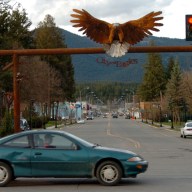TTC chair discusses goal of automated train control
“I want to democratize the subway system.”
It’s essentially up to re-elected mayor David Miller whether or not current TTC chair Howard Moscoe gets to keep his position when the next set of transit commissioners are announced over the next few weeks. Even if the outspoken, controversial politician has to settle for vice-chair or even regular member of the governing board — it’s a good bet that Moscoe will have a major say in TTC affairs over the next four years.
When asked Friday by In Transit if he wants to be reappointed as chair, he said, “Well, let’s say that I have some plans I’d like to see fulfilled.”
Just days after being returned as Toronto city councillor last week, Moscoe was promoting the idea of “automated train control” — a way to computerize the subway system so that no driver is necessary. One employee would watch the doors and operate the train only in an emergency. Does this expensive scheme push other projects such as new transit lines further down the list of TTC priorities?
“Not necessarily,” he replied, “because the $750 million will be phased over a period of time.”
What else does he want to do?
“I want to democratize the subway system. I’ll give you an example — our (subway) stations are worth $40 or $50 million each. They’re deteriorating, they’re dirty … and they’re in bad need of rehabilitation.” Moscoe wants to use automated train control as a way of removing one employee from each train — allowing the TTC to organize its personnel “more efficiently,” he said, and especially to “create the position of station master.”
A designated person would be responsible for the rehabilitation of each rail station, working with a “committee consisting of users and neighbours, and include the local councillor and some (TTC) employees who wanted to volunteer,” he said.
Computer-driven subway trains would also give the TTC more time to repair subway tracks, a major task now limited to the few hours every morning when the system is shut.
Moscoe said automated subways would mean that north and south trains could alternate on the same tracks, allowing continuous work on nearby rails.
“We’d save a bundle of money on track repairs and be able to put that money into the renovation of stations,” he said.
Is he concerned that the TTC’s unions will see these changes as a way to cut jobs overall?
“I hope not. Of course they’re reacting that way right now.
“I anticipate sitting down early with the unions and talk about that factor, and to try to get a buy-in from them,” he said.
“It’s not my intention at all to cut jobs.”
















